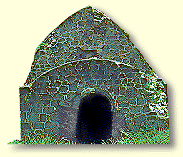| Home
Page
History & Culture
Admiral
Horatio Nelson
Points
of Interest
Brimstone
Hill Fortress
Basseterre
Nevis
Charlestown
Beaches
Activities
Diving
Fishing & Boating
Golfing
Eco-Adventures
Travel
Tips
Transportation
Accommodations
Restaurants & Nightlife
Calendar
of Events
Destination
Specialists
Best
Bets
Tourist
Offices
Geographia
|

St. Kitts & Nevis
Original Official Site of
the St. Kitts & Nevis
Department of Tourism
 St.
Kitts' early history, like the island's Carib petroglyphs, is
inscribed in the towns, landmarks, and estates of the island
itself. Colonization began on St. Kitts in 1623, with the arrival
of Sir Thomas Warner, his family, and fourteen others at what
is now Sandy Point and their settlement at Old Road Bay. The
English were joined in 1625 by French settlers led by Pierre
Belain d'Esnambue, who had sought refuge on the island after
a losing fight with a Spanish galleon. The two groups wiped out
the Carib Indians in a massacre at Bloody Point in 1626, weathered
a Spanish attack in 1629, and then turned their attentions to
colonizing the islands around them. From St. Kitts, the British
settled Nevis, Antigua, Barbuda, Tortuga, and Montserrat, while
the French claimed Martinique and Guadeloupe. St.
Kitts' early history, like the island's Carib petroglyphs, is
inscribed in the towns, landmarks, and estates of the island
itself. Colonization began on St. Kitts in 1623, with the arrival
of Sir Thomas Warner, his family, and fourteen others at what
is now Sandy Point and their settlement at Old Road Bay. The
English were joined in 1625 by French settlers led by Pierre
Belain d'Esnambue, who had sought refuge on the island after
a losing fight with a Spanish galleon. The two groups wiped out
the Carib Indians in a massacre at Bloody Point in 1626, weathered
a Spanish attack in 1629, and then turned their attentions to
colonizing the islands around them. From St. Kitts, the British
settled Nevis, Antigua, Barbuda, Tortuga, and Montserrat, while
the French claimed Martinique and Guadeloupe.
By the middle of the century, as St.
Kitts & Nevis became
increasingly prosperous, intermittent warfare between the French
and British took hold. The French exiled the British from St.
Kitts in 1664, only to lose it back to them in 1689. France captured
the island again in 1706 and lost it once more soon after. Finally,
they returned in 1782 to lay seige to the massive British fort
on Brimstone Hill, which fell after
a heroic defense. St. Kitts was returned permanently to the British
in 1783, as part of the Treaty of Versailles.
Click here to
see what visitors are saying about interesting places in St.
Kitts & Nevis.
|
|



